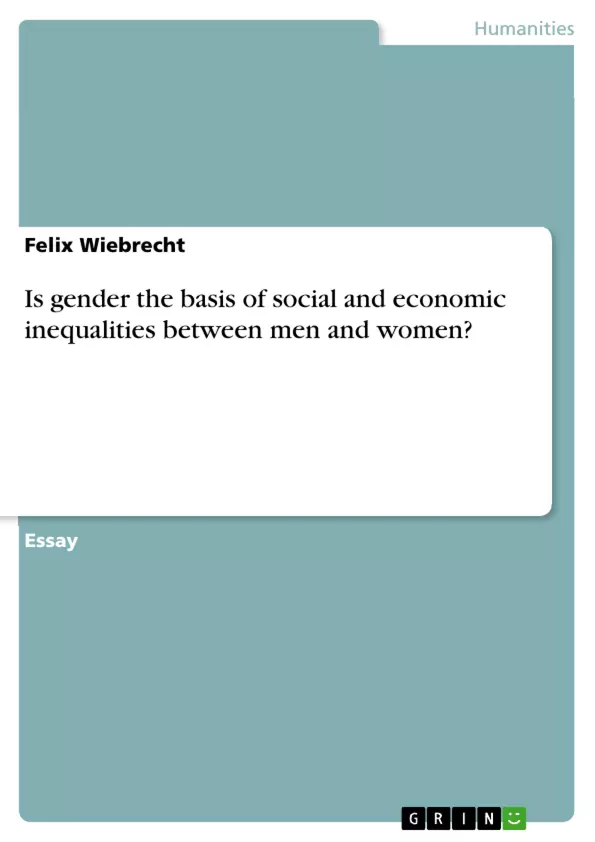Evaluate the claim that gender is the basis of social and economic inequalities between men and women.
Inhaltsverzeichnis (Table of Contents)
- Introduction
- Sex and Gender
- Socialization and Gender Roles
- Patriarchal Society
- Impact of Gender Roles on Work Opportunities
- Gender Segregation
- The Social Construction of Gender Roles
- Conclusion
Zielsetzung und Themenschwerpunkte (Objectives and Key Themes)
This paper aims to evaluate the claim that gender, rather than biological sex, is the primary cause of social and economic inequalities between men and women. The paper explores the historical and contemporary influences of gender roles in shaping these disparities. * **Gender Roles:** The paper examines the historical and contemporary social construction of gender roles, particularly focusing on the impact of patriarchal systems and societal expectations. * **Domestic Labor and Childcare:** The paper analyzes how traditional gender roles have disproportionately burdened women with domestic responsibilities, impacting their labor market participation and economic opportunities. * **Gender Segregation and Occupational Inequality:** The paper explores the phenomenon of gender segregation in the labor market, demonstrating how women are often concentrated in low-paying, part-time, or “feminine” occupations. * **Social Conditioning and Subordination:** The paper argues that women’s subordination is not naturally determined but is learned through social conditioning, media representations, and educational practices. * **The Social Construction of Gender:** The paper provides evidence from cross-cultural comparisons, highlighting the variability of gender roles and demonstrating that gender is not a fixed or inherent characteristic.Zusammenfassung der Kapitel (Chapter Summaries)
- Introduction: This section establishes the context of the paper, introducing the topic of gender and its relationship to social and economic inequalities between men and women.
- Sex and Gender: This section distinguishes between sex and gender, emphasizing that the focus of the paper is on gender as a socially constructed concept, rather than biological differences.
- Socialization and Gender Roles: The paper discusses the historical development and contemporary implications of gender roles in Western societies. It highlights how traditional gender roles have resulted in a division of labor that favors men and burdens women with domestic responsibilities.
- Patriarchal Society: The paper analyzes the impact of patriarchal systems on the social and economic inequalities between men and women. It explores how these systems have historically and currently reinforced female subordination.
- Impact of Gender Roles on Work Opportunities: This section examines the specific ways in which gender roles affect women’s work opportunities. It highlights issues such as career interruptions, gender-based wage gaps, and limited access to training and promotion.
- Gender Segregation: The paper explores the phenomenon of gender segregation in the labor market, highlighting how women are often concentrated in poorly paid and undervalued occupations.
- The Social Construction of Gender Roles: This section presents evidence from cross-cultural comparisons, demonstrating that gender roles are not universal or naturally defined but are rather shaped by cultural and social factors.
Schlüsselwörter (Keywords)
This paper focuses on the intersection of gender, social inequality, and economic disparities between men and women. It examines the influence of patriarchal systems, traditional gender roles, domestic labor, gender segregation, and the social construction of gender on the social and economic opportunities available to women.
Excerpt out of 6 pages
- scroll top
- Quote paper
- Felix Wiebrecht (Author), 2012, Is gender the basis of social and economic inequalities between men and women?, Munich, GRIN Verlag, https://www.grin.com/document/207945
Look inside the ebook



